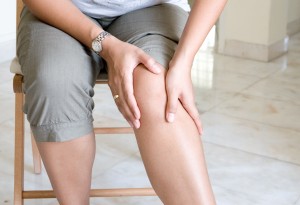1
|

- Start moving. Joints are designed to move and reducing movement also reduces synovial fluid lubrication and blood circulation within joints.
- Perform static flexion of joints for a minimum of 2-3 minutes prior to exercise or prolonged activity. Full flexion of a joint decreases joint pressure and distributes lubricants across the joint space.
- Move joints through a full range of motion. Limiting joint movement causes uneven wear on joints.
- Joints that “give out” are typically the result of issues with the muscles and ligaments that cross the joints. Maintaining good muscle tone is essential for joint stability.
- Edema and swelling in and around joints (joint effusion) can contribute to joint pain. Wearing thin, flexible compression sleeves over joints (i.e. ankles, wrists, knees, and elbows) combined with the “pumping” action of joint movement can reduce or prevent joint swelling.
Dietary Recommendations
- Glucosamine sulfate, a supplement found in the exoskeletons of crustaceans, has been shown to ease joint pain and stiffness in joints if taken during early onset. Dose: 1,500 mg (1.5 gm) per day.
- Omega-3 fatty acids have been shown to have anti-inflammatory and pro-resolution properties. These fatty acids stimulate the clearance of inflammatory debris, promote mucosal antimicrobial defense, protect organs from collateral damage, and enable inflamed tissues to return to homeostasis. Dose: 1,240 mg (1.24 gm) per day.
- Herbs such as turmeric, ginger, and boswellia may also be beneficial as natural anti-inflammatories. Bromelain, a pineapple enzyme, has also been used as an anti-inflammatory when taken in doses of 200-400 mg per day on an empty stomach.
- S-adenosylmethionine (SAMe) is found naturally in the body. SAMe supplementation has been found to be as effective as and safer than non-steroidal anti-inflammatory drugs (NSAIDs) but has a slower onset time. Dose: 400 mg 3-4 times per day for 1-12 weeks.
